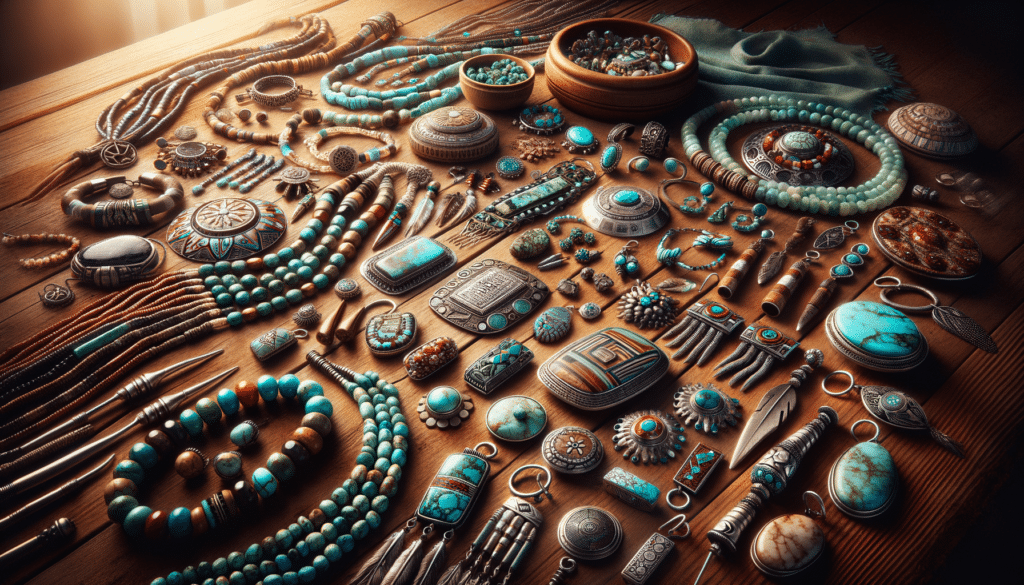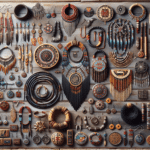Understanding the Significance of Native American Jewelry
Native American jewelry is more than just decorative art; it is a profound representation of cultural identity and historical legacy. These pieces are often imbued with symbolism and meaning, reflecting the beliefs and traditions of various Indigenous tribes. Historically, jewelry was used not only for adornment but also as a means of trade, a marker of social status, and a spiritual talisman.
One of the key materials used in Native American jewelry is turquoise, a stone that holds significant cultural value. Turquoise is believed to bring protection, health, and luck to its wearer. Many tribes, including the Navajo, Zuni, and Hopi, have incorporated turquoise into their jewelry, each with distinct styles and techniques.
Beyond turquoise, Native American jewelers have utilized materials such as silver, coral, shell, and wood. The use of silver became prominent in the late 19th century, with Navajo smiths mastering the art of silversmithing and creating intricate designs that are now iconic.
Native American jewelry continues to evolve, with contemporary artists drawing inspiration from traditional methods while experimenting with new materials and forms. This blend of old and new ensures that the cultural significance of these pieces remains relevant in today’s world.
Finding Authentic Native American Jewelry Near You
For those interested in acquiring authentic Native American jewelry, the journey often begins with finding reputable sources. It’s important to distinguish between genuine handcrafted pieces and mass-produced imitations. Authentic Native American jewelry is typically crafted by artisans who belong to Indigenous tribes, ensuring that the pieces are made with cultural integrity.
One way to find authentic jewelry is to visit Native American cultural events, such as powwows and art markets, where artisans showcase and sell their work. These events provide an opportunity to meet the creators and learn about the stories and techniques behind each piece.
Additionally, many museums and cultural centers have gift shops that offer authentic jewelry. These establishments often work directly with Native American artists, ensuring that the pieces are genuine and fairly traded.
For those who prefer to shop online, it’s crucial to research the seller’s credentials. Look for retailers that provide information about the artist and tribe associated with each piece. Authentic pieces are usually accompanied by a certificate of authenticity, which guarantees their origin and craftsmanship.
Exploring the Diversity of Native American Necklaces
Native American necklaces are renowned for their diversity and craftsmanship. Each tribe has developed its own unique style, resulting in a wide array of designs that reflect their cultural heritage.
The Zuni tribe, for example, is known for its intricate stone inlay work, where small pieces of turquoise, coral, and other stones are meticulously set into silver to create vibrant patterns. These necklaces often depict symbols such as animals, feathers, and celestial motifs, each carrying its own meaning.
The Navajo are famous for their squash blossom necklaces, which feature a crescent-shaped pendant known as a “naja” and beads that resemble squash blossoms. These necklaces are often adorned with turquoise stones and are considered a staple of Navajo jewelry.
Hopi necklaces, on the other hand, are known for their overlay technique, where designs are cut out of silver and layered over a contrasting background. This method creates a striking visual effect and often features traditional Hopi symbols such as kachinas and the sun.
Whether you are drawn to the vibrant colors of Zuni inlay work, the bold presence of Navajo squash blossom necklaces, or the intricate designs of Hopi overlay, Native American necklaces offer a rich tapestry of artistry and cultural expression.


